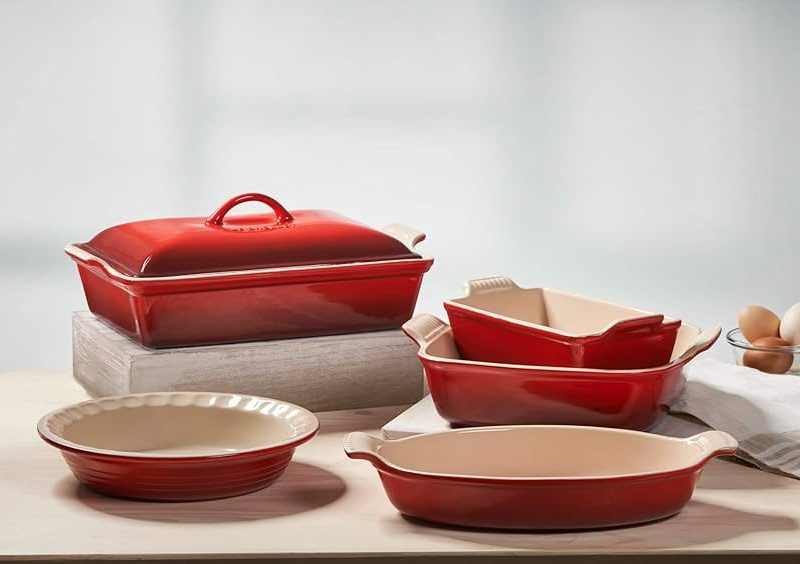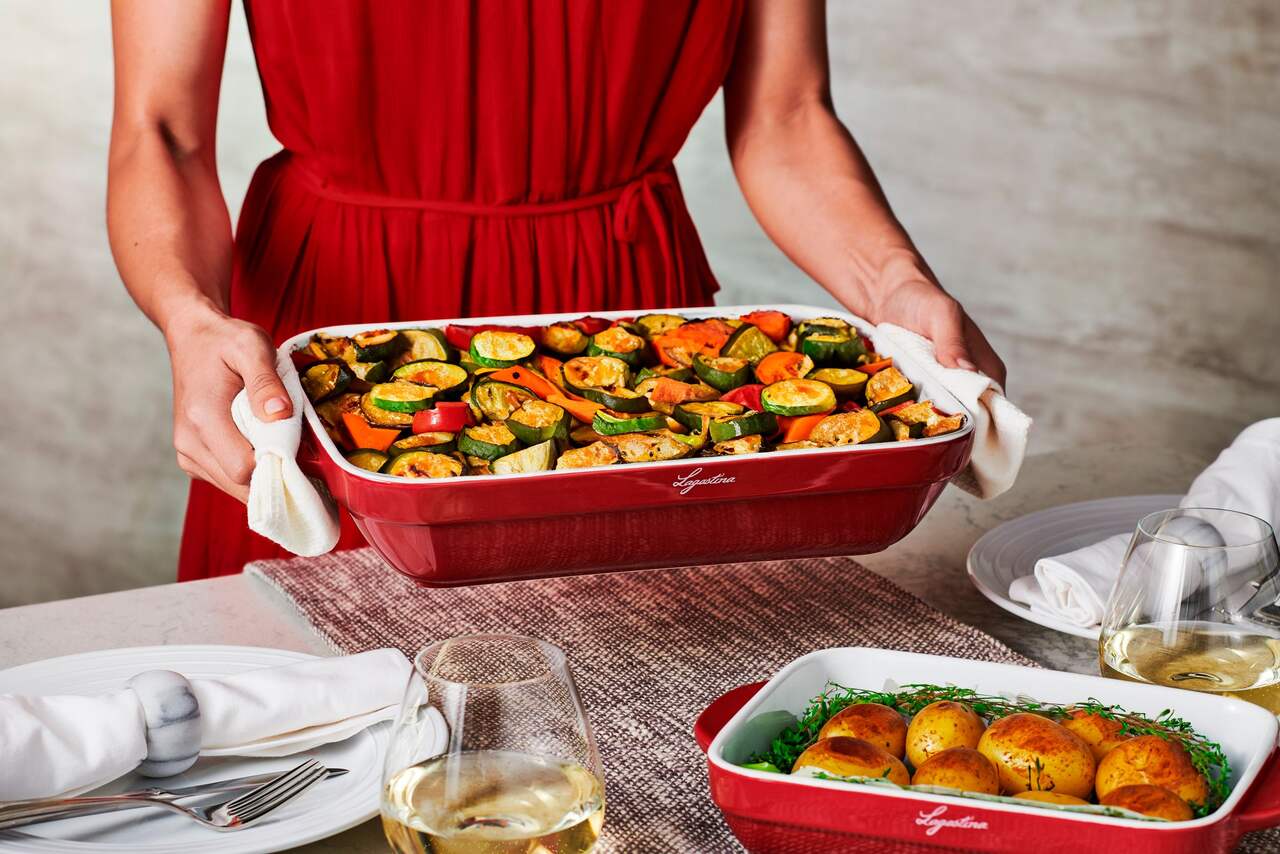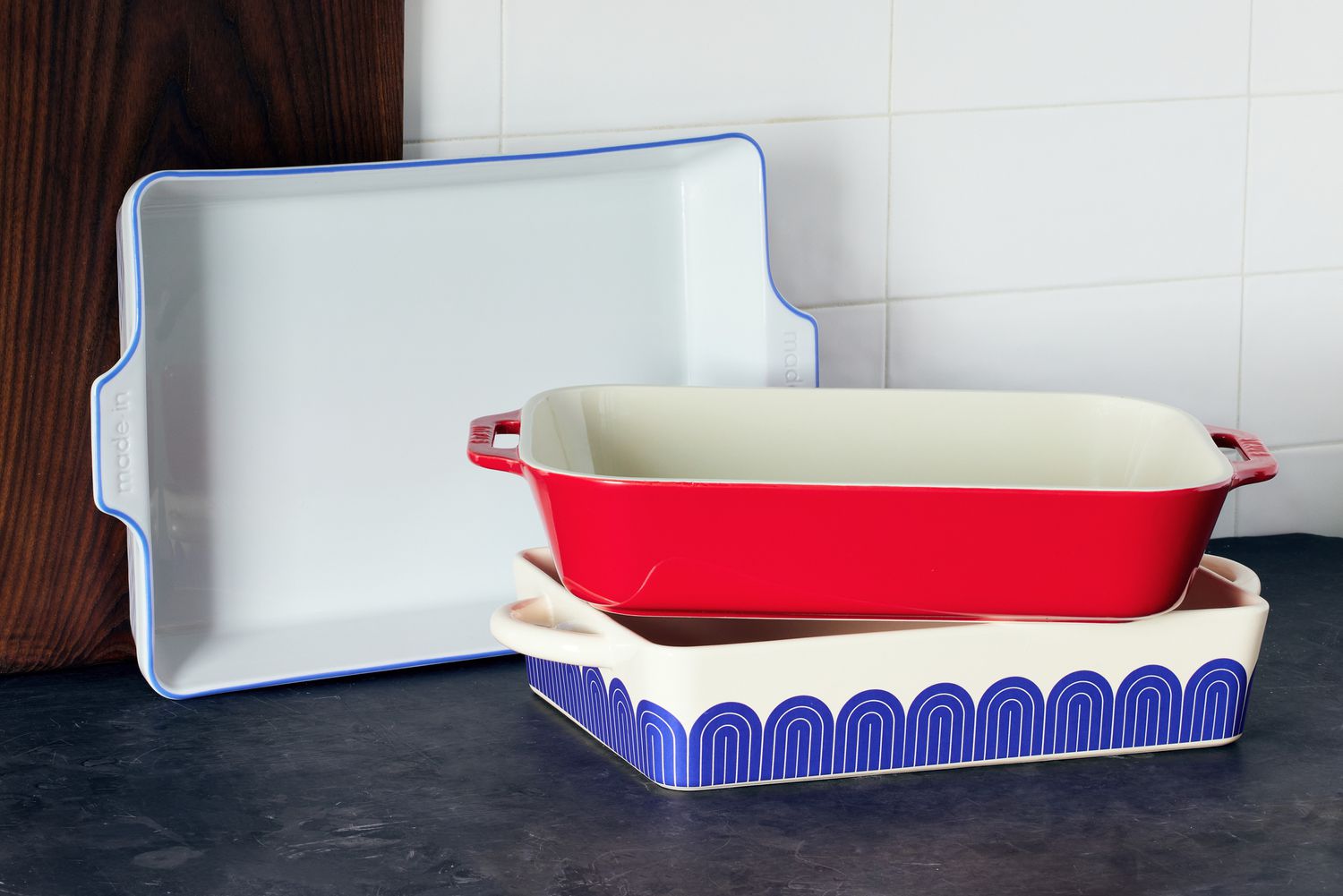
Ceramic Pans are becoming increasingly popular because of their safety. As with any new product worth the hype, ceramic bakeware and cookware have also raised their fair share of questions—mostly about whether it’s safe to use. The Ceramic Pan is 100% safe for cooking and eating with, but as with any new bakeware, you should definitely do some research before bringing a new ceramic pan into your kitchen.
Why are people increasingly concerned about the safety of bakeware?
The main reason is people’s doubts about the safety of non-stick pans. As early as the 1950s, Teflon-coated pans, also known as non-stick pans, began to gain popularity. At that time, DuPont developed Teflon coating, a type of polytetrafluoroethylene (PTFE), and applied it to pans. Due to the excellent non-stick properties of this coating, Teflon pans quickly became popular in the market.
Although Teflon pans remained popular in the late 20th century, in the early 21st century, concerns about the safety of Teflon coatings began to arise. Teflon coatings use a chemical called perfluorooctanoic acid (PFOA) in the manufacturing process. Studies have found that PFOA may be harmful to human health, including cancer risks and endocrine disruption.
Teflon coatings begin to decompose at high temperatures above 260 degrees Celsius (500 degrees Fahrenheit), releasing toxic gases. These gases are potentially risky to human health, especially in a home cooking environment, where they may compromise safety if the pans are heated to too high a temperature. Although DuPont began phasing out PFOA in 2013, public concerns about its health risks have already attracted widespread attention.
With the development of technology, many new non-stick pan materials have appeared on the market, such as ceramic pans, stainless steel composite pans, etc. These new materials are generally considered safer and environmentally friendly. Unlike Teflon non-stick pans, ceramic pans are becoming more and more popular due to their safety. Ceramic materials usually do not contain toxic chemicals and are heat-resistant. They can withstand temperatures up to 450 degrees Celsius and will not release toxic fumes when heated at high temperatures. Therefore, it is a better choice from a safety perspective. Switching to non-toxic bakeware or cookware is a key step towards a healthy life.

How to choose safe pans?
If you’ve been browsing the web looking for new pans for baking or cooking, you’ve probably seen some sites use words like “PFOA-free” or “PFA-free” to describe them. PFAS, PTFE, PFOA: What do they all mean? Let’s get the basics straight.
- PFAS: Short for per and polyfluorinated substances, PFAS are a group of chemicals that have been used in consumer products since the 1940s. In addition to nonstick pans, they’re found in many everyday items like stain-resistant furniture, waterproof clothing, and cosmetics.
- PFOA: Perfluorooctanoic acid was banned from use in bakeware and cookware in the U.S. because studies have shown it causes birth defects, cancer, and hormone disruption.
- PTFE: Also known as polytetrafluoroethylene (Teflon is a type of PTFE). Like PFOA, it’s part of the PFAS family, but it’s still in use today. Many traditional nonstick pans contain PTFE, which can release toxic fumes if overheated.
Choosing new pans can be a daunting task because there are so many materials to choose from. To make the right choice for human health, choose pure ceramic or ceramic coated pans. It is important to avoid any pans that contain potentially toxic chemicals such as PFOA, PFAS, PTFE, or any heavy metals that have been linked to serious side effects in the human body.
Both pure ceramic and ceramic coated pans retain heat and distribute heat evenly. Pure ceramic pans have thick walls and are heavier to carry or move around the kitchen, making them best suited for those who prefer a heavier feel to their cooking needs. Ceramic coated pans, on the other hand, offer a lightweight option. Whether you choose pure ceramic or ceramic coated pans, any type of pan can be a great choice, depending on each person’s cooking needs.

Understanding ceramic pans
The main material of ceramic pots is high-quality clay, which is usually mixed with several different types of clay to achieve the desired physical and chemical properties. The clay slurry is poured into a plaster mold and solidified to form a ceramic blank.
After firing at a specific temperature and time, the organic matter in the ceramic blank is burned off, enhancing the hardness and strength of the ceramic blank. Then it needs to be glazed to give the ceramic pot a smooth surface and form a glass-like coating. These glazes are usually a mixture of silicon, aluminum oxide, calcium oxide and other oxides. The glazed ceramic blank will be put into the kiln again to form a smooth and hard glaze.
Ceramic pots provide a natural non-stick surface and no toxic chemicals are used in the production process. Whether from the selection of raw materials or the manufacturing process, the impact on the environment is minimal. Ceramic pots are an environmentally friendly and sustainable bakeware and cookware choice, and also ensure a healthy cooking experience from many aspects.

Advantages of ceramic pans
Naturally non-stick
Ceramic pans have a naturally non-stick surface. Unlike traditional non-stick pans, the ceramic coating achieves its non-stick properties through its physical structure rather than chemical additives. When fired at high temperatures in a kiln, the glaze melts and fuses with the ceramic to form a hard, impermeable surface.
سهلة التنظيف
The natural non-stick surface of ceramic pans is not easy to adhere to food residues and grease, making cleaning more convenient. Ceramic materials have stain-resistant properties and are difficult to be stained by pigments and stains in food. Even if there is residue, it is easy to clean.
Chemical corrosion resistance
Ceramic pans are highly resistant to acidic and alkaline cleaners and can be cleaned with a variety of common kitchen cleaners without damaging the surface.
Won’t interact with food
One of the most important advantages of using ceramic pans is the inertness of its material. This means that it will not interact with the food being cooked. Some metals produce unpleasant tastes or chemically react with acidic foods, such as tomatoes or lemon juice. This feature is a crucial consideration for those who pursue the purest taste and the safest cooking conditions.
Even heat distribution
Ceramic pans are known for their ability to evenly distribute heat, ensuring dishes cook evenly. This property is due to the natural properties of ceramic, which is an excellent conductor of heat. Ceramic absorbs heat slowly and distributes it evenly. This is particularly useful for temperature-sensitive dishes, such as sauces or chocolate, where temperature consistency can have a major impact on the end result.
Keeping food warm
Ceramic pans retain heat effectively, contributing to their even cooking performance. Once the desired temperature is reached, ceramic pans maintain that temperature, allowing food to be cooked thoroughly without having to constantly adjust the heat source. This means that dishes can be kept warm for longer, even when away from the heat source. Whether you are stewing, sautéing, baking or frying, ceramic pans provide a reliable and stable cooking environment.
Tips for caring for your ceramic pans
Avoid using metal utensils
To ensure the ceramic pans’ non-stick surface remains intact, avoid using metal utensils or scrubbing with abrasive materials. Use wooden, silicone or nylon utensils to avoid scratching the pan’s surface. Do not cut food directly in the pot to avoid damaging the glaze.
Avoid drastic temperature differences
When using ceramic pans, be careful to avoid drastic temperature changes, such as placing a cold pot directly on a hot flame, or immediately placing a pan in cold water after taking it out of a hot temperature. These temperature shocks damage the non-stick surface and may cause the ceramic pans to expand and contract and crack.
Clean regularly
Make sure to clean the pan regularly, using a neutral mild detergent and a soft cloth or sponge to wash the pan. Do not use metal brushes or hard cleaning tools. For stubborn stains, gently scrub with a paste made of baking soda and a small amount of water, or soak in warm water for a period of time before cleaning.
Check regularly
Check the pot regularly for cracks or damage, and replace it if you find any problems. Handle it carefully during use and storage to avoid collisions and falls. If you stack multiple ceramic pans, it is recommended to place a soft cloth or paper towel between each pot to prevent them from hitting each other.

FAQ about Ceramic Pans
Can ceramic pans be used in the oven?
Yes, ceramic pans are safe to use in the oven. Ceramic is an excellent choice over other types of cookware because it distributes heat evenly and retains heat well. Its durability and low porosity also make it ideal for high-temperature cooking, making it versatile and perfect for a busy kitchen. Before using any type of ceramic bakeware or cookware in the oven, always read the care instructions carefully to ensure the best results.
Can ceramic bakeware and cookware be used in the microwave?
Of course, they can be safely used in the microwave, but be aware of the following: Make sure there is no metal trim or gold edging on the bakeware and cookware, as metal can cause sparks and damage the microwave. Before using, it is best to check the manufacturer’s instructions to confirm that it is marked as microwave safe. Overall, most ceramic pans without metal trim are suitable for use in the microwave.
Can you clean ceramic pans in the dishwasher?
Yes, ceramic pans are generally safe to clean in the dishwasher, and washing ceramic cookware in the dishwasher is a very effective and low-cost way to thoroughly clean it. When choosing to use a dishwasher, always read the manufacturer’s instructions and make sure that the dishwasher you use is not set at too high a temperature or too high a power level for ceramic pans.
Are ceramic pans good for your health?
Yes, ceramic pans are good for your health. When purchasing ceramic pans, make sure that the glaze used to seal the ceramic is lead-free, urea-free, and non-toxic. This type of pan is safe for any food preparation or storage needs. Pet owners often use ceramic pans because they are much less harmful to their pets than many other available materials.
In addition, ceramic pans do not retain odors like plastic or metal containers and are not prone to corrosion. The heat-retaining ability of ceramic bakeware and cookware makes it ideal for slow cooking (low and medium) a variety of dishes, creating nutritious and flavorful dishes. Finally, ceramic pans are very easy to clean and maintain, allowing you to enjoy the safest and healthiest meals possible.
What should not put on your ceramic pans?
Avoid using sharp metal utensils, steel wool, and abrasive nylon items. These tools can scratch the surface of ceramic pans and even cause the pans to chip if used regularly. It’s best to stick with wooden or silicone utensils to get the most out of your ceramic pans.

الخاتمة
As long as you take good care of them, ceramic pans are a safe and healthy choice for your family. With just a few simple tips, you can keep your ceramic bakeware and cookware in good condition while ensuring the safety of your loved ones.
سيراميك جينهوا — Professional Ceramic Pans Manufacturer
سيراميك جينهوا is an expert of ceramic pans, dedicated to providing consumers with high-quality, non-toxic and exquisite ceramic bakeware and cookware. Through continuous innovation and strict production processes, we have created a variety of styles of ceramic pans to meet different cooking needs. Whether it is daily cooking or high-end cuisine, Jinhua Ceramic’s wholesale ceramic pans can help people easily achieve a perfect cooking experience. If you are looking for a reliable bakeware and cookware manufacturing partner, choose Jinhua Ceramic, we will be your trusted partner.




